There are 10 basic principles that comprise effective access management:
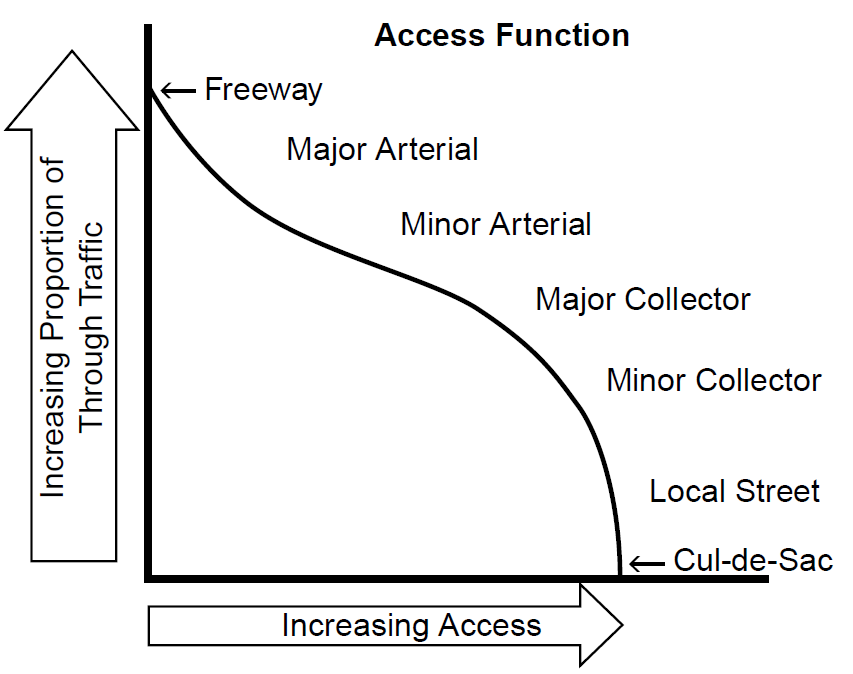
(1) Provide a specialized roadway system
Roads function in many different ways depending on system and user needs. The main function of freeways and expressways is mobility, i.e., high speed/volume and long distance travel. In contrast, the main function of local roads (e.g., residential areas) is to provide access to abutting properties. Arterial and collector roads traditionally function between these two extremes. It is important to design and manage roads according to the primary functions they are expected to serve.
(2) Limit direct access to major roadways
The greatest benefit of access management is preserving the functional integrity of high speed, high capacity highways such as the state highway system. Freeways are the best example of this principle. By providing more access to adjacent properties on the state highway system, its ability to move traffic declines. This, in turn, degrades the public investment in those highways and causes motorists to look elsewhere to provide that traffic movement.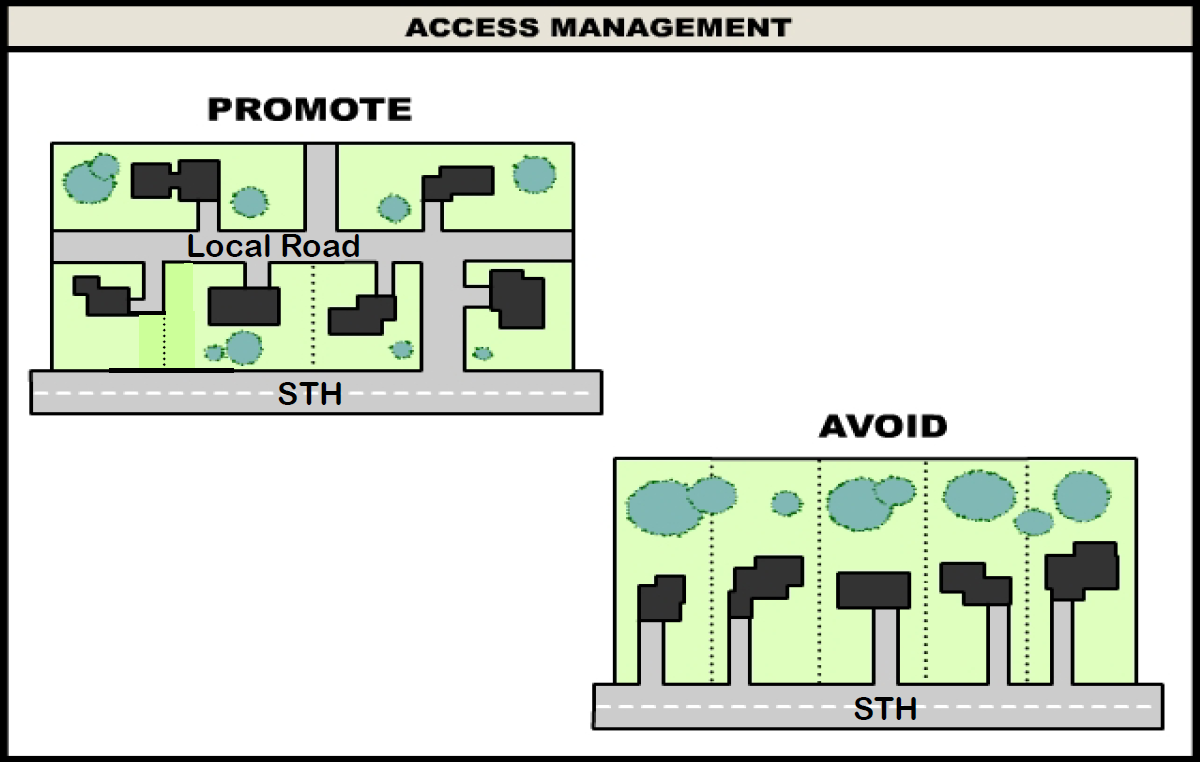
Allowing access only via intersecting streets rather than at each abutting property best preserves the public investment in a road; fewer capacity expansions will be needed in the future, traffic flow will be maintained, and crashes will be reduced. Providing direct private property access onto a state highway may carry a high public cost. In urban areas, maintaining direct property access on lower-speed local roads rather than a state highway promotes bicycle and pedestrian travel.
Limiting property access to a main highway and providing cross-access between businesses can aid pedestrian travel since motorists can walk to from store to store rather than drive. This is very common in areas with a higher number of local trips. By connecting cul-de-sacs to arterials with open pathways, pedestrians and bicyclists can be accommodated in areas where motorized vehicle access has been eliminated.
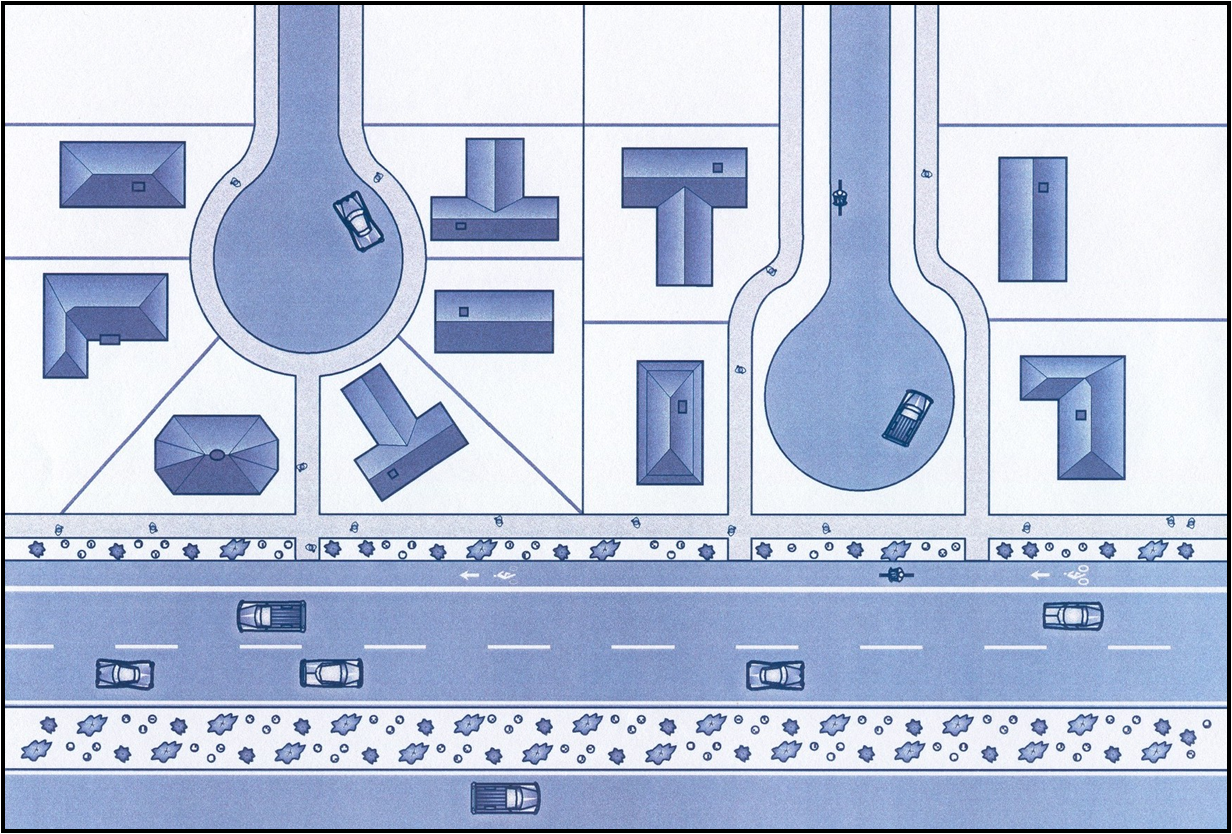
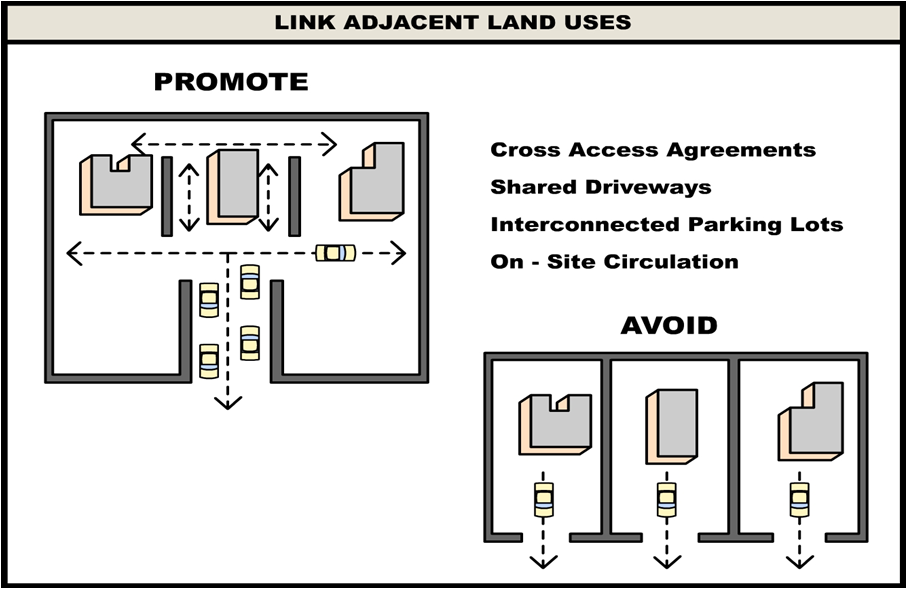
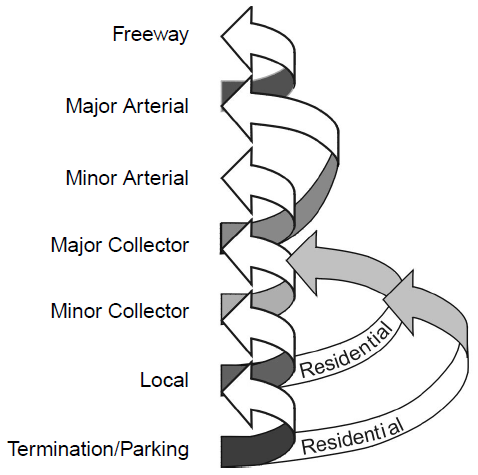
(3) Promote intersection hierarchy
A safe and efficient roadway system provides the appropriate transitions from one road classification to another. It is important to avoid connecting a road of lower classification to one with a higher classification. For example, freeways typically connect to arterials rather than collectors or local roads, and arterials typically do not have many residential accesses. By preserving this hierarchy, traffic flow is maintained on higher road classifications and access conflicts are generally reduced and more manageable. Similarly, appropriate access is maintained on lower road classifications.
(4) Locate traffic control signals to favor through movements
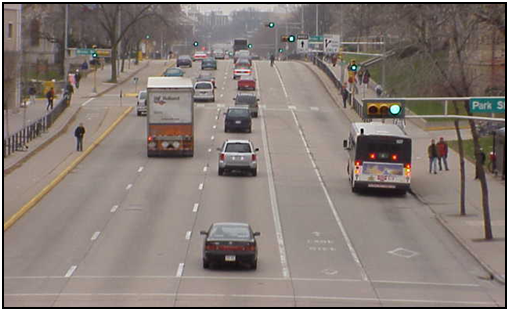 If an arterial road has poorly spaced and uncoordinated signals, its capacity, traffic speed and safety may be severely hampered by crossing movements. For example, a distance of ½-mile or more between signals is desirable, but that may be too far for effective coordination. Access management includes evaluating signal spacing and developing a traffic signal system plan in order to achieve travel speed and capacity objectives for all surface transportation modes.
If an arterial road has poorly spaced and uncoordinated signals, its capacity, traffic speed and safety may be severely hampered by crossing movements. For example, a distance of ½-mile or more between signals is desirable, but that may be too far for effective coordination. Access management includes evaluating signal spacing and developing a traffic signal system plan in order to achieve travel speed and capacity objectives for all surface transportation modes.
(5) Preserve the functional area of intersections and interchanges
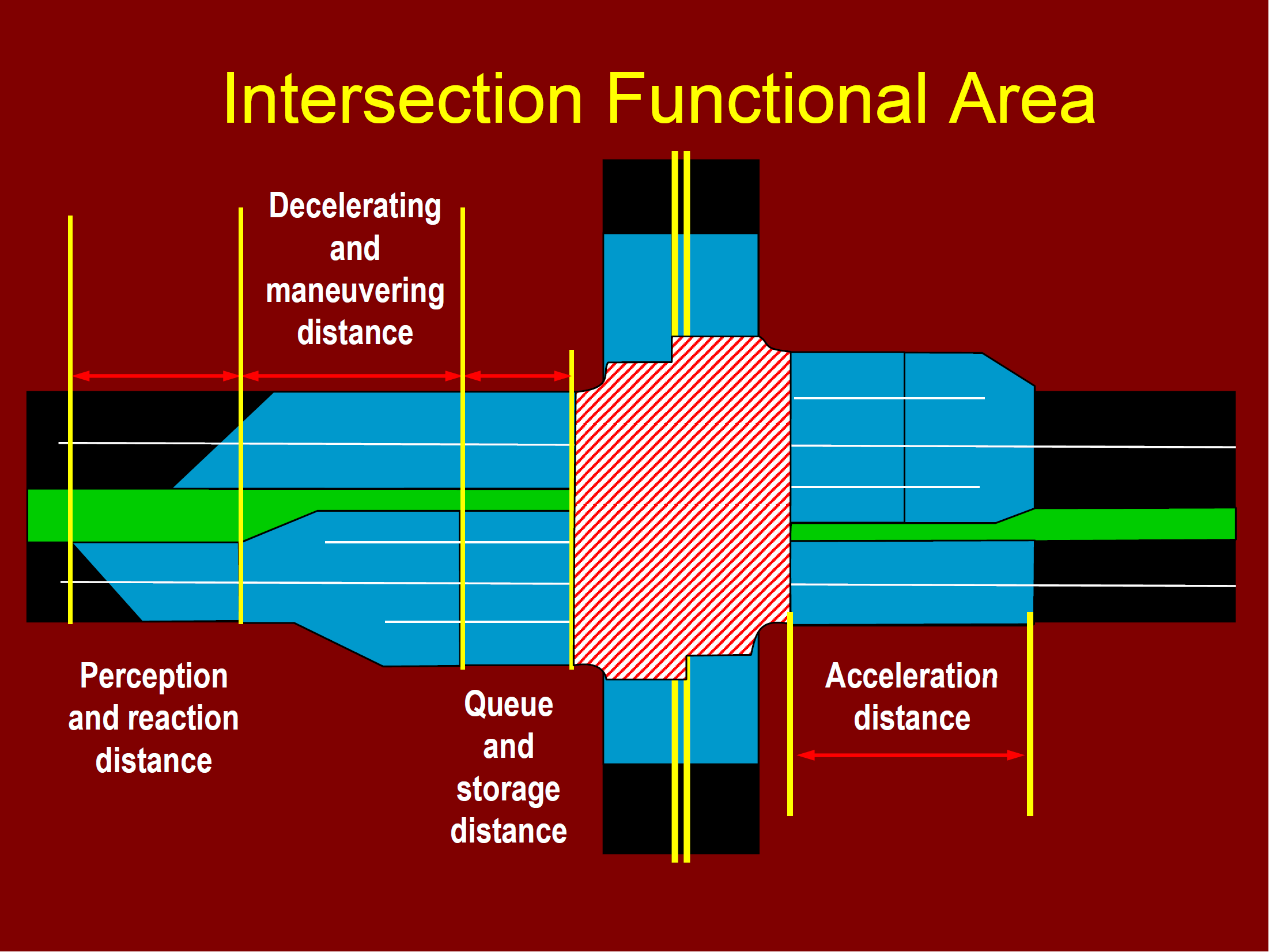 The most critical area of an intersection or interchange is its functional area. This is the area where motorists have to make numerous decisions regarding turning, stopping, accelerating, exiting, merging, weaving, etc. Accesses that are too close to intersections or interchange ramps can cause serious traffic conflicts and greatly impair the function of these facilities. WisDOT's goal is to eliminate accesses within the functional area of an intersection and not permit new ones. With interchanges, WisDOT aims to obtain sufficient access control on the crossroad.
The most critical area of an intersection or interchange is its functional area. This is the area where motorists have to make numerous decisions regarding turning, stopping, accelerating, exiting, merging, weaving, etc. Accesses that are too close to intersections or interchange ramps can cause serious traffic conflicts and greatly impair the function of these facilities. WisDOT's goal is to eliminate accesses within the functional area of an intersection and not permit new ones. With interchanges, WisDOT aims to obtain sufficient access control on the crossroad.
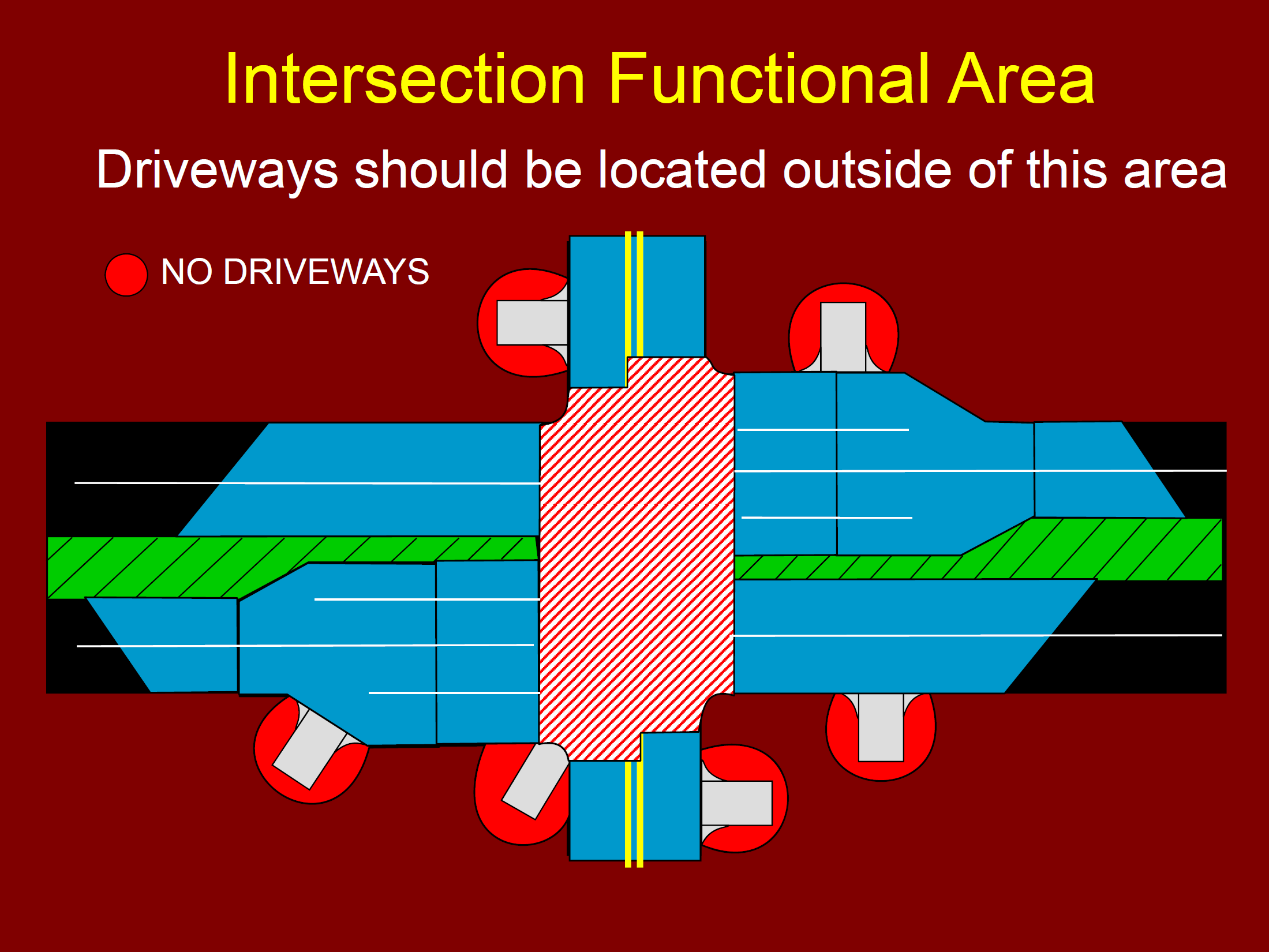
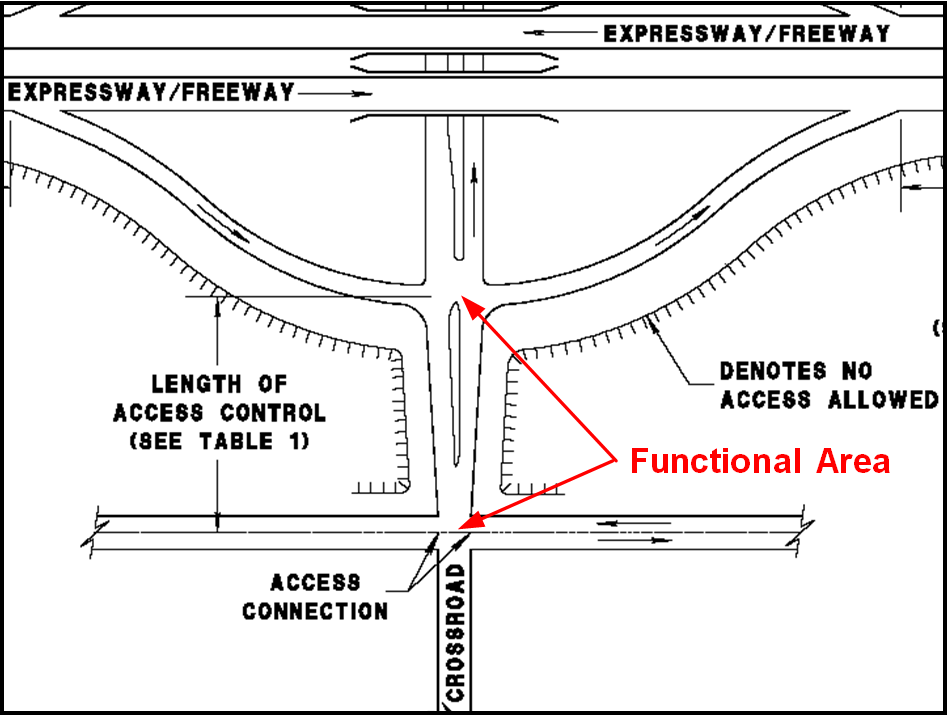
(6) Limit the number of conflict points
Traffic conflicts occur when the paths of vehicles intersect and may involve the following:
.png)
Each conflict point is a potential collision. As conflicts increase, driving conditions become more complex and drivers are more likely to make mistakes. Similar conflicts can also occur between vehicles and bicycles, and vehicles and pedestrians. Proper access management aims to reduce these conflicts.
Wisconsin Administrative Code Trans 231.03(2) states, "The number of driveways permitted serving a single property frontage along a state trunk highway shall be the minimum deemed necessary by [WisDOT] for reasonable service to the property without undue impairment of safety, convenience, and utility of the highway." It is under this authority that WisDOT acts to limit the number of conflict points along the state highway network.
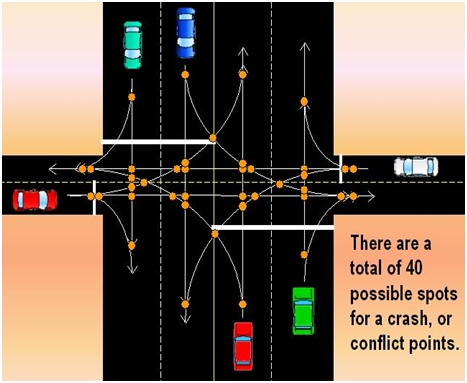 Intersections typically have the most possible conflict points – up to 40 where a four-lane road intersects with a two-lane road. A driveway on a two-lane road has seven possible conflict points, while a driveway with only right-in and right-out turns has just two possible conflict points.
Intersections typically have the most possible conflict points – up to 40 where a four-lane road intersects with a two-lane road. A driveway on a two-lane road has seven possible conflict points, while a driveway with only right-in and right-out turns has just two possible conflict points.
A business with three driveways on a typical four-lane road (without a median) produces numerous conflict points. Reducing three driveways to one achieves a 66% reduction in conflict points. Fewer driveways also means there is more space and more alternatives for a good design of the remaining driveway, and more available on-site space for parking.
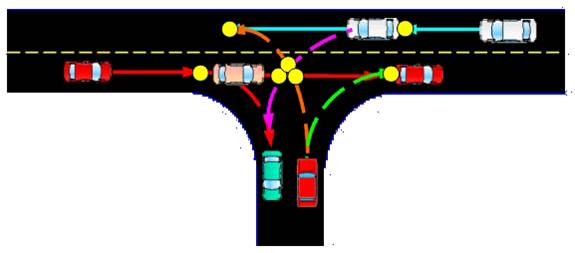
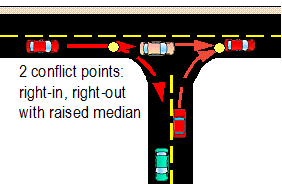
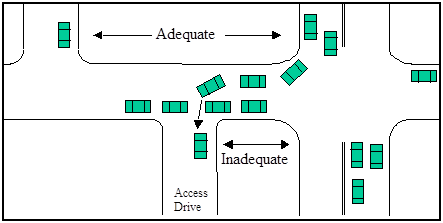
(7) Separate conflict areas
Separating conflict areas reduces possible crashes. Effective ways to do this include establishing minimum distances between intersections and driveways, and establishing corner clearance standards that separate driveways from the critical approach areas of intersections. Each of these techniques provides better sight distance for motorists, which improves traffic operations and safety. More separation distance also gives motorists longer perception and reaction time. Higher traffic speed requires greater driveway separation. A single driveway can serve multiple businesses if interconnectivity or cross-access is provided and appropriately designed.
(8) Remove turning vehicles from through traffic lanes
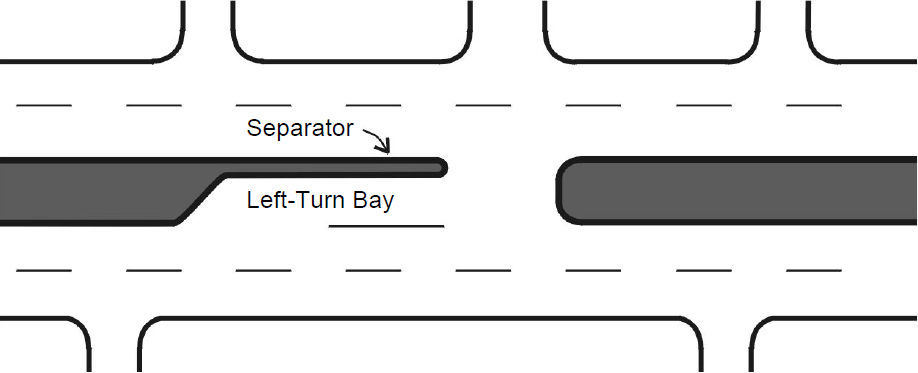
Vehicles typically slow before turning. By removing turning vehicles from the main traffic flow, vehicle speed can be properly maintained at or near the posted limit. In addition to maintaining speed, road capacity preservation and potential crash reduction also occur. Many access management design tools serve to create safer driving conditions such as separating turn lanes, carefully spacing median openings, and constructing highway interchanges and service roads. The interchange is the ultimate form of separating turning movements.
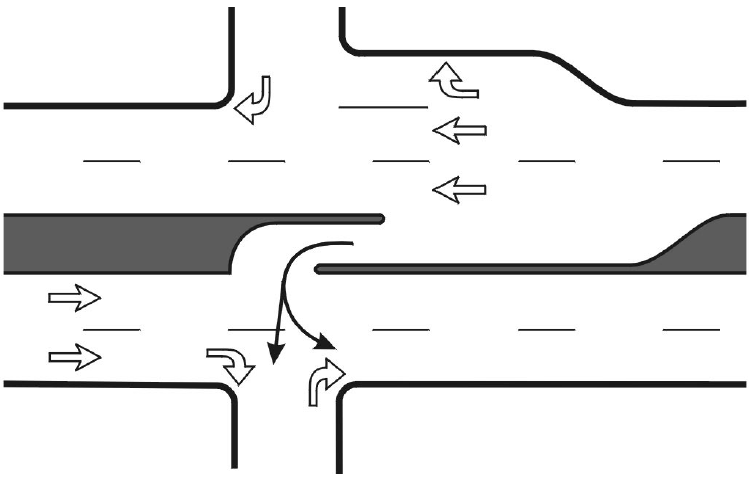
(9) Use non-traversable medians to manage left-turn movements
Certain access management techniques can reduce the number of conflict points that multi-modal highway users have to negotiate. For example, medians help eliminate many conflict points by limiting left turns. Directional median openings can also safely provide for controlled access with few conflict points. When medians are used, an access becomes right-in/right-out only with just two conflict points. Constructing medians with mid-block crossings can help concentrate pedestrian crossing locations thus raising their visibility to motorists. Medians also provide a two-stage crossing. Good access management helps pedestrians and bicyclists travel both along and across highways safely and comfortably.
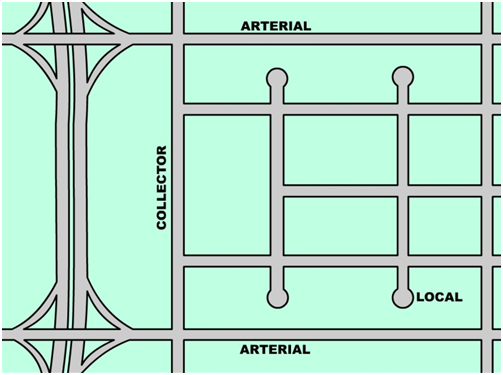
(10) Provide a supporting street and circulation system
A supporting street and circulation system (SSCS) provides alternative access for local motorists and relieves congestion on major roadways. It is key in providing alternative routes for highway incidents or planned detours for construction projects. A local SSCS should be protected by constructing streets crossing freeways without interchanges to encourage and enhance the movement of local traffic on those streets. Such streets increase the efficiency of not only vehicles, but also bicycles and pedestrians. Access management standards consistent with SSCS protect investments in those roads, businesses and residential areas, and further work to enhance the future viability of a community. When a road combines high traffic volumes with too many conflict points, roadway function and level of service decline, the ability to safely access abutting properties is hampered, and surface transportation mode choices are limited. These roads are not safe and efficient.